“The Mars Atmosphere and Volatile Evolution Mission (MAVEN) will explore the planet’s upper atmosphere, ionosphere and interactions with the sun and solar wind. Scientists will use MAVEN data to determine the role that loss of volatile compounds – such as carbon dioxide, nitrogen dioxide, and water – from the Mars atmosphere to space has played through time, giving insight into the history of Mars atmosphere and climate, liquid water, and planetary habitability. The MAVEN Principal Investigator is Dr. Bruce Jakosky of the University of Colorado’s Laboratory for Atmospheric and Space Physics (CU/LASP), and the project is managed by NASA’s Goddard Space Flight Center”. – NASA
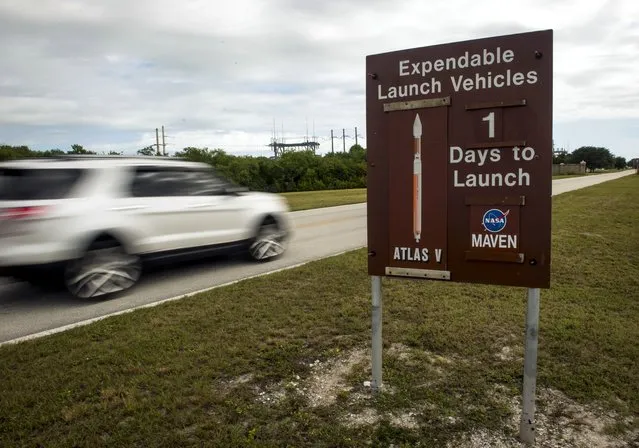
A sign along the NASA Kennedy Space Center causeway displays to passersby that there is one day remaining until the scheduled launch of the United Launch Alliance Atlas V rocket with NASA's Mars Atmosphere and Volatile Evolution (MAVEN) spacecraft onboard from Cape Canaveral Air Force Station Space Launch Complex 41, Sunday, November 17, 2013, in Cape Canaveral, Fla. The robotic explorer called Maven is due to blast off Monday, November 18, 2013 on a 10-month journey to the red planet. There, it will orbit Mars and study the atmosphere to try to understand how the planet morphed from warm and wet to cold and dry. (Photo by Bill Ingalls/AP Photo/NASA)

An AtlasV rocket rolls out to Launch Complex 41 carrying the Maven spacecraft Saturday, November 16, 2013, at Cape Canaveral Air Force Station in Florida. The Maven spacecraft will directly assess the atmosphere of the planet Mars. (Photo by Red Huber/Orlando Sentinel/MCT)
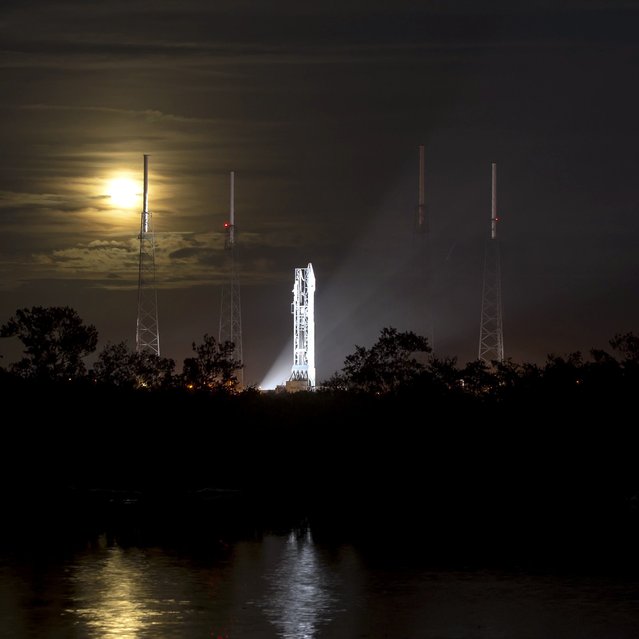
This photo provided by NASA shows a full moon rising behind the United Launch Alliance Atlas V rocket with NASA's Mars Atmosphere and Volatile Evolution (MAVEN) spacecraft onboard at the Cape Canaveral Air Force Station Space Launch Complex 41, Sunday, November 17, 2013, Cape Canaveral, Florida. NASA's next Mars-bound spacecraft, the Mars Atmosphere and Volatile Evolution, or MAVEN, is the first spacecraft devoted to exploring and understanding the Martian upper atmosphere. (Photo by Bill Ingalls/AP Photo/NASA)
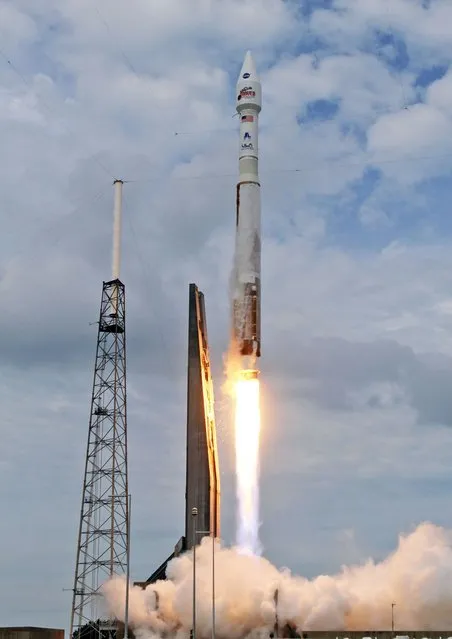
An Atlas V rocket, carrying the Maven spacecraft, blasts off at Cape Canaveral Air Force Station, Fla., on Monday, November 18, 20131. Maven is on a 10-month journey will directly assess the atmosphere of the planet Mars. (Photo by Red Huber/Orlando Sentinel/MCT)
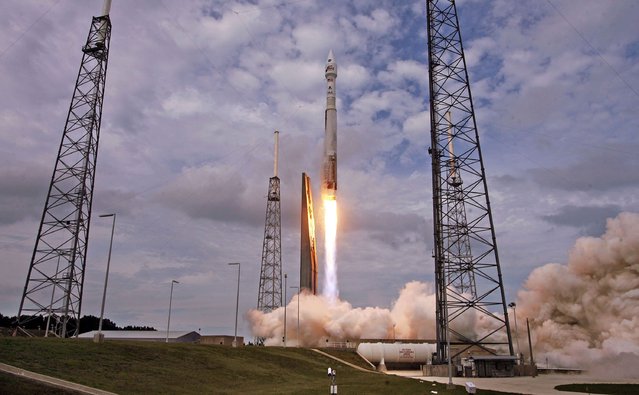
An Atlas V rocket, carrying the Maven spacecraft, blasts off at Cape Canaveral Air Force Station, Fla., on Monday, November 18, 20131. Maven is on a 10-month journey will directly assess the atmosphere of the planet Mars. (Photo by Red Huber/Orlando Sentinel/MCT)
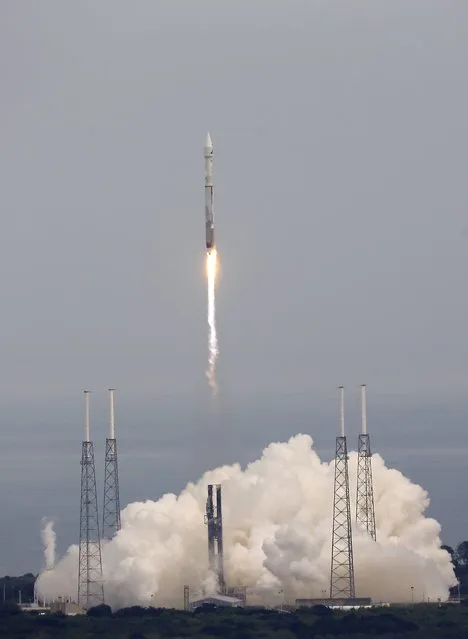
NASA's newest robotic explorer, Maven, atop a United Launch Alliance Atlas 5 rocket, lifts off from Cape Canaveral Air Force Station, Monday, November 18, 2013, in Cape Canaveral, Fla. The spacecraft will orbit Mars and study the planet's upper atmosphere.(Photo by AP Photo/John Raoux)
19 Nov 2013 06:42:00,
post received
0 comments
